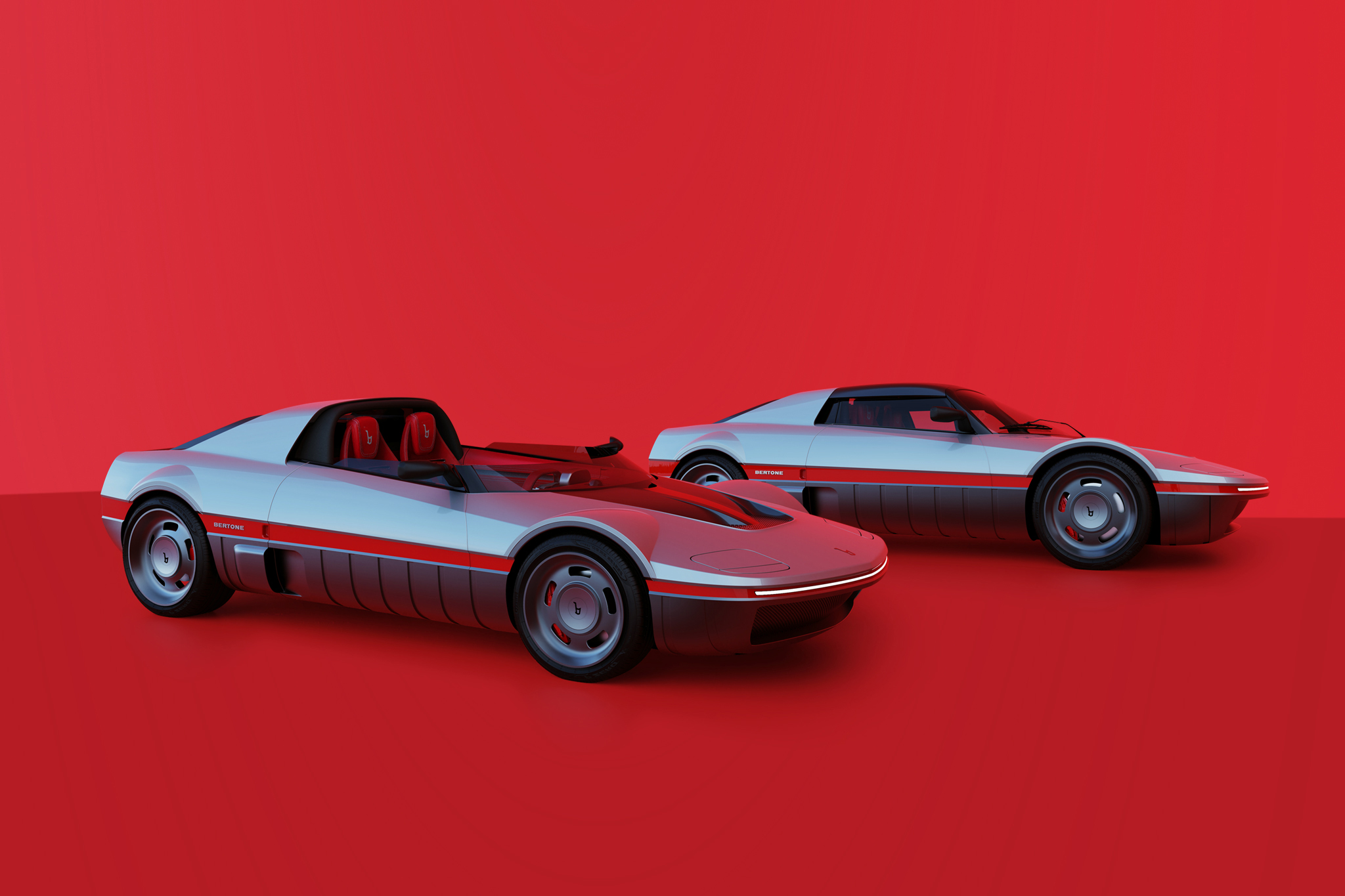30 Years of Audi V8
Many people know Audi only in their present form as a manufacturer of high-quality automobiles from small cars to the upper class. The fact that the brand has a history dating back to 1909, is just as often a source of wonder, as the fact that Audi after World War 2 appeared only as early as 1965 and had to slowly and laboriously fight into today’s position in the VW Group. The Ingolstadt-based has only been occupying the area of the automotive upper class again for 30 years. In autumn 1988, a vehicle rolled to the dealers, which was based in its technical fundamentals on the third model generation of the Audi 100 and 200 (internal code C3). Inside the factory, the abbreviations ‘4C’ and ‘D11’ circulated for the model originally intended to be offered as ‘Audi 300’, but was ultimately reduced to its engine shape by name: V8.
First post-war V8 engine from Audi
In fact, Audi had specially developed for this new model their first post-war eight-cylinder engine. This received 32 valves and four overhead camshafts. Initially, the cubic capacity of the aluminium block was 3.6 liters, from which the Audi engineers tickled 184 kW/250 hp and 340 newtonmeters of torque. Four years later, the model range was supplemented by a top version with 206 kW/280 hp and 400 newtonmeters of torque from 4.2 liters. In each case, there was the permanent quattro all-wheel drive system and a four-speed automatic transmission from ZF, with a manual five-speed gearbox available after customer requests from 1990. With the introduction of the larger engine version, they even switched to a six-speed manual, yet most customers chose the automatic anyway.
UFO-discbrakes at front axle
There was also a suspension with wishbones and MacPherson struts at front and double wishbones at the rear. As with the Audi 200 20V, the V8 received brakes on the front axle, with the brake pads gripping the discs from the inside. These were developed by ATE Teves and received the nickname UFO due to their eye-catching look. Although they offered up to 30 percent better braking performance than normal disc brakes with the same size, they were only used in the Audi S6 (C4) and some Porsche models, but have since disappeared from the market.
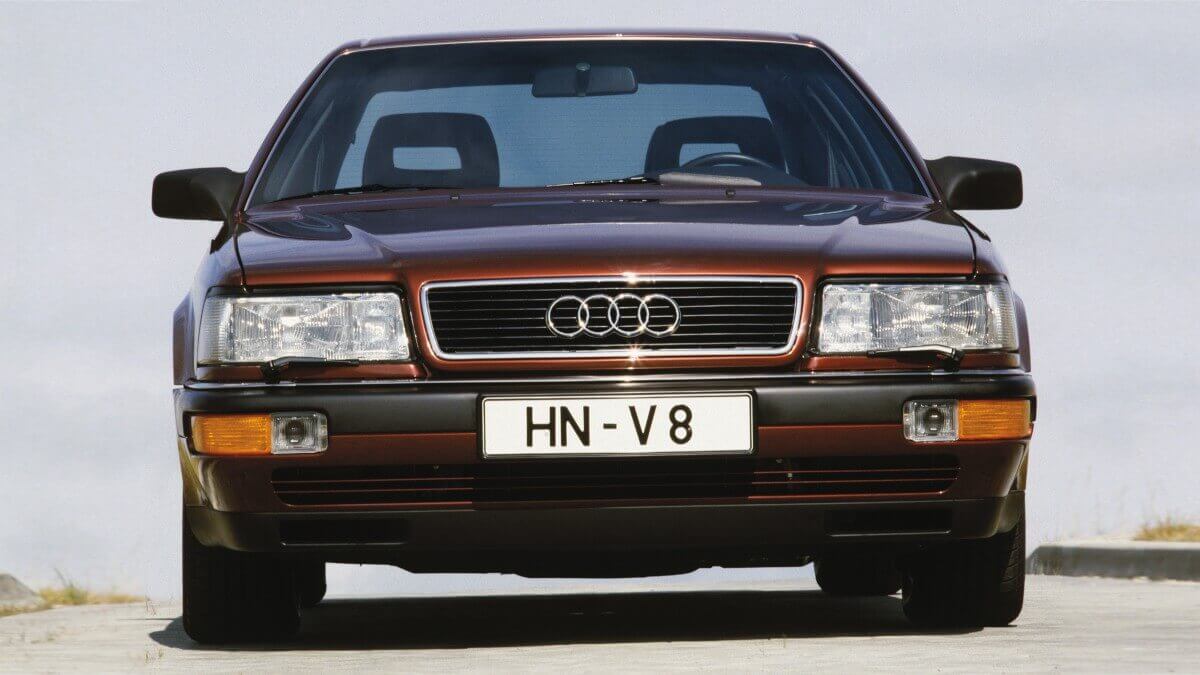



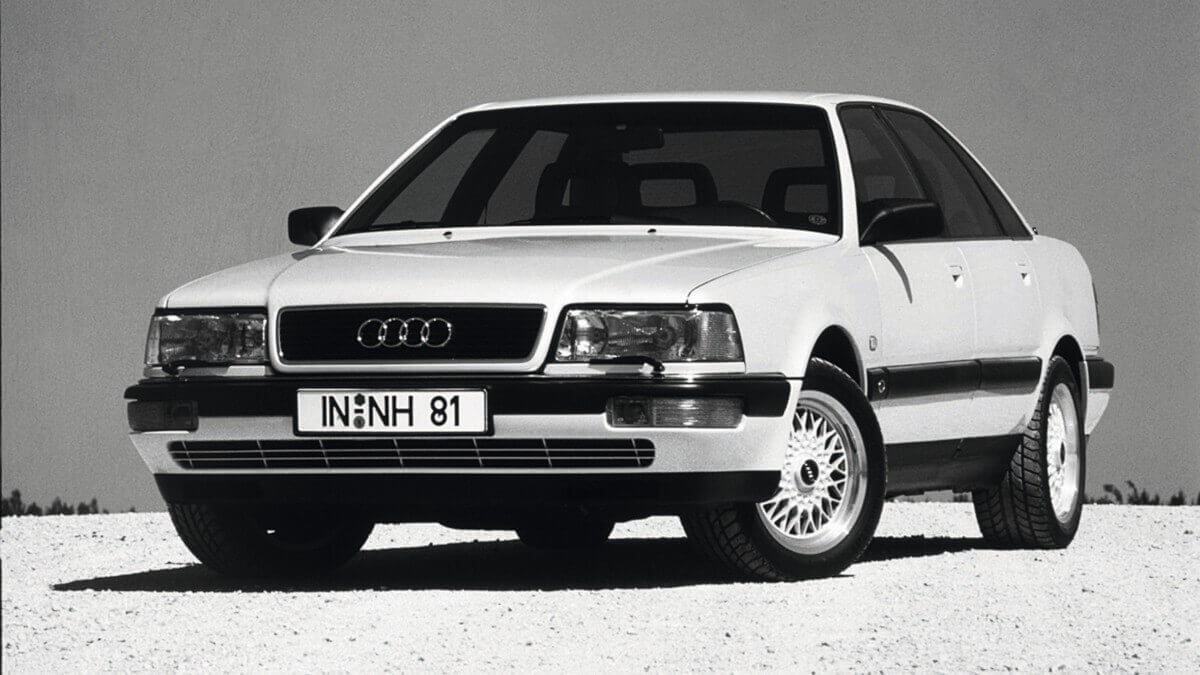



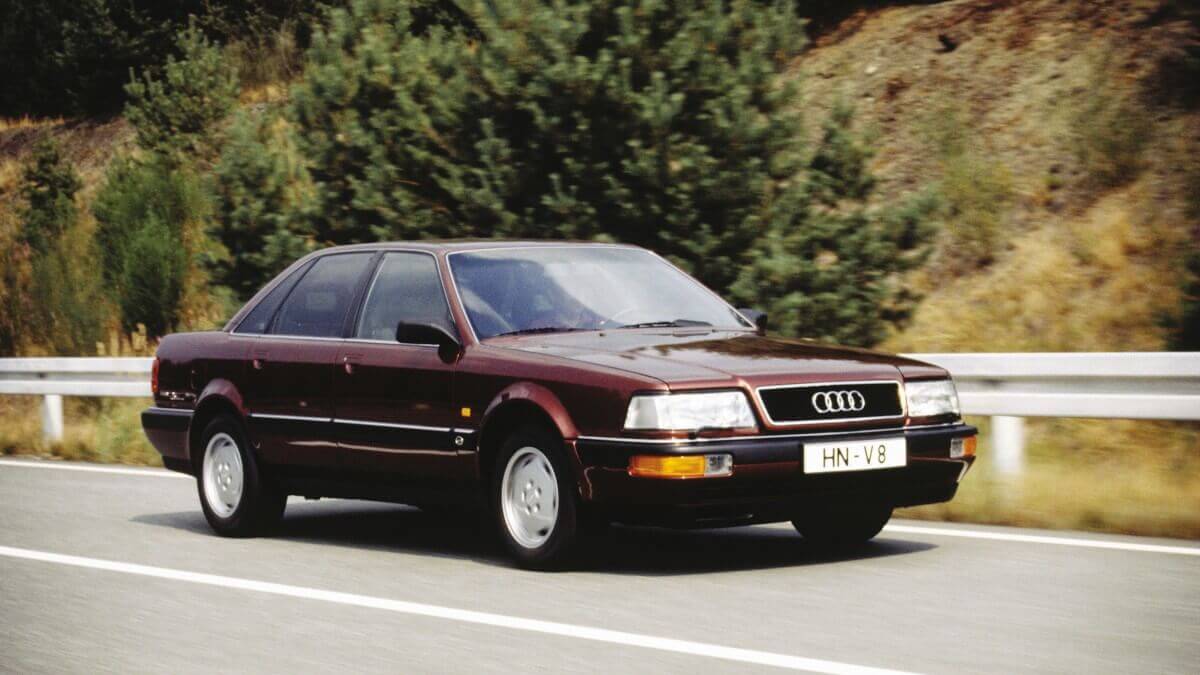



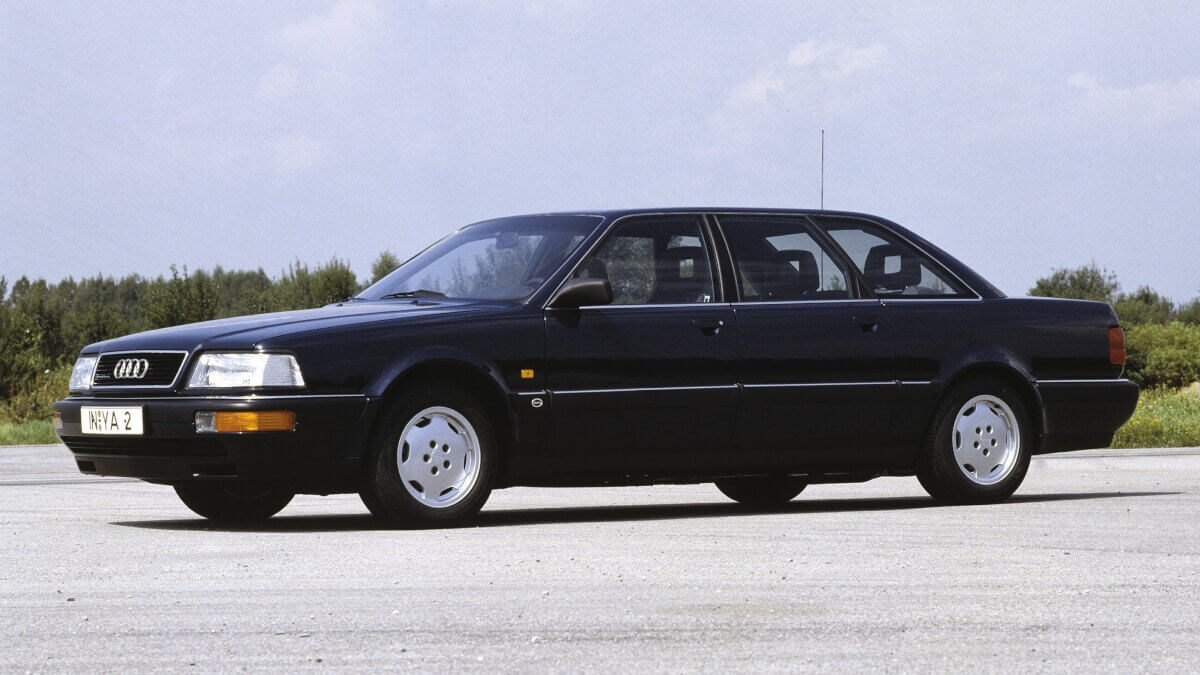

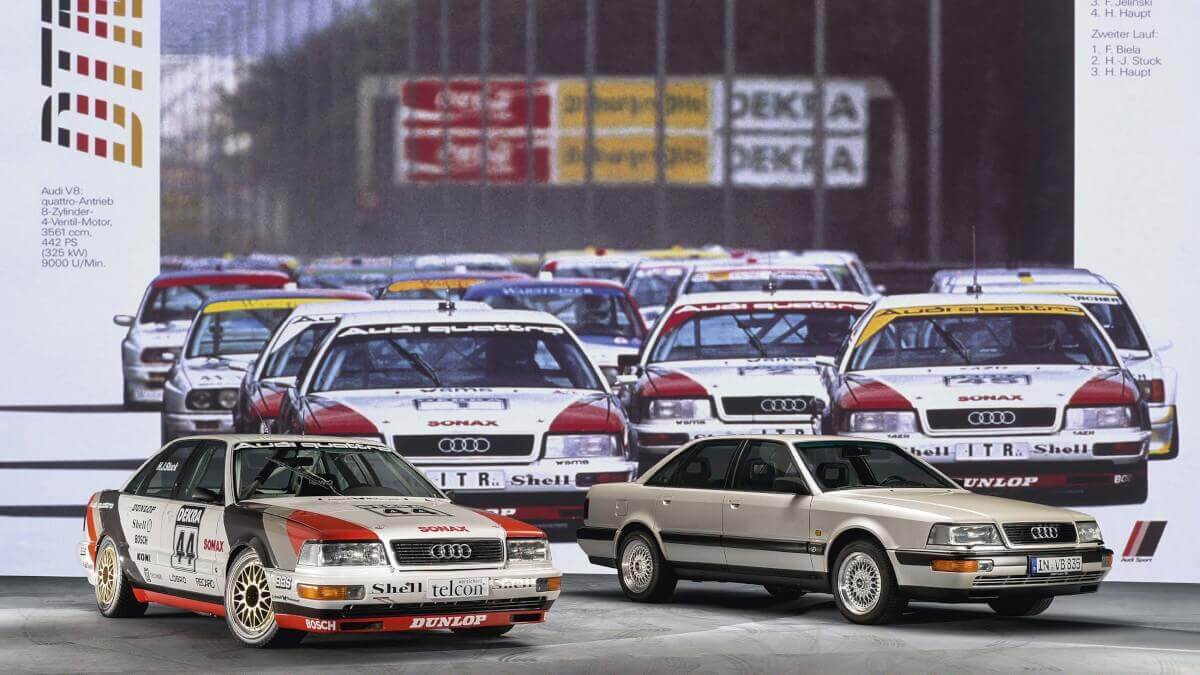

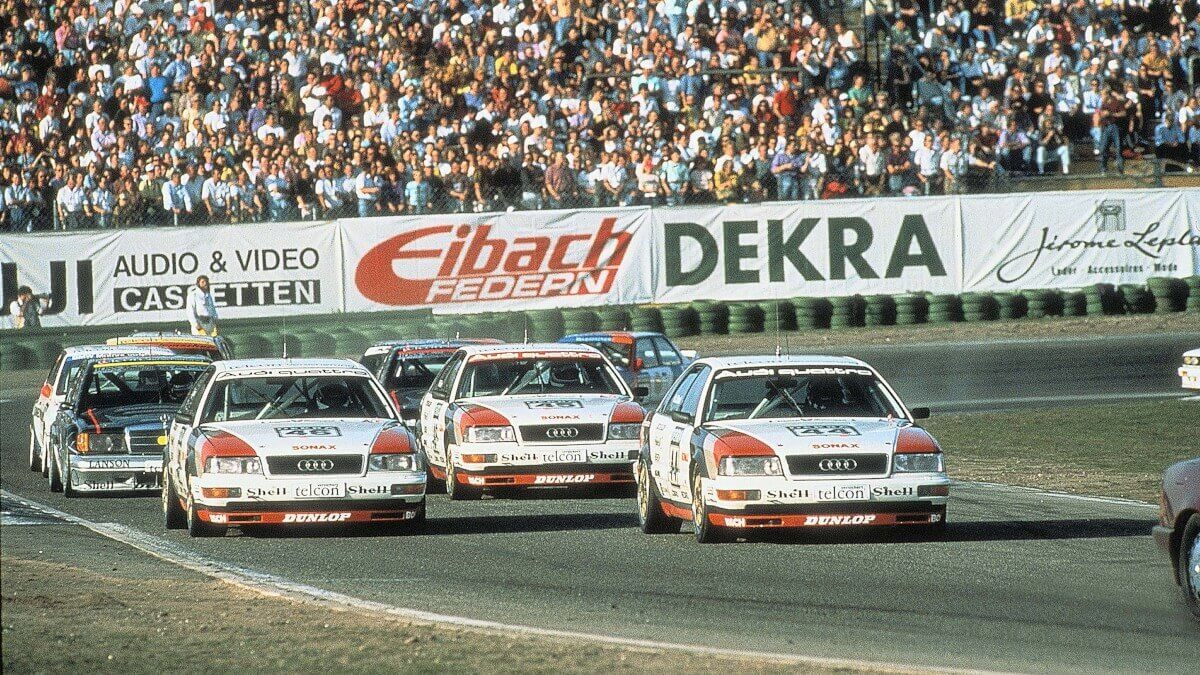

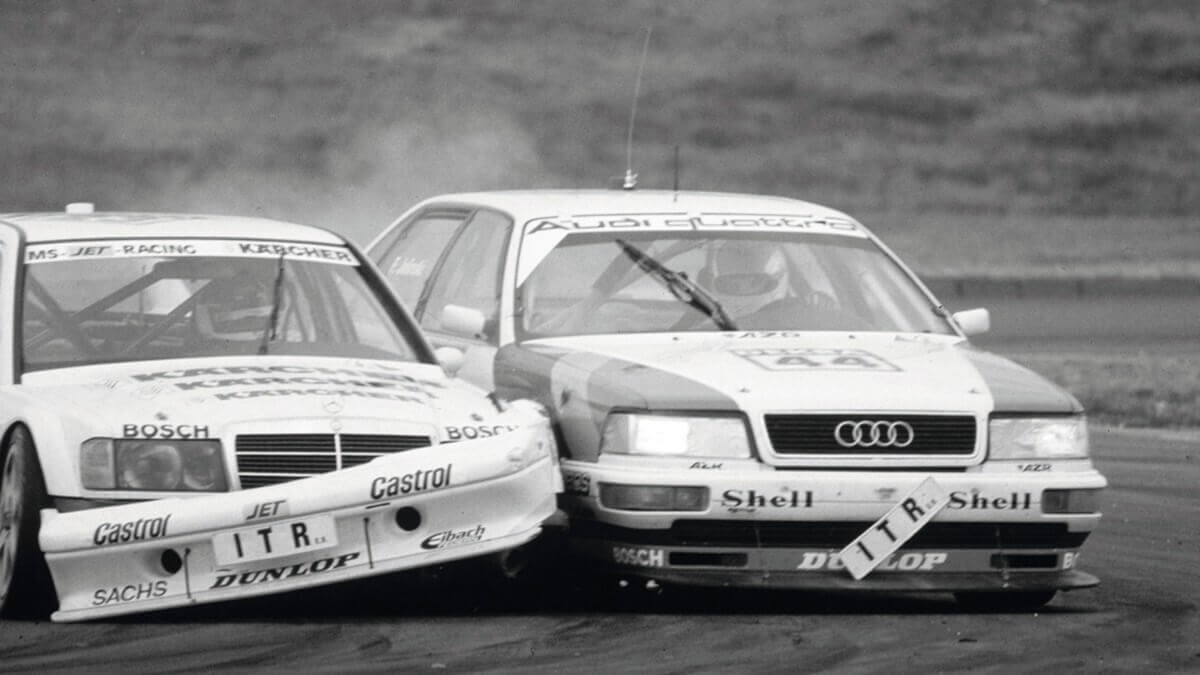



Due to its visiual proximity to the 100/200 (C3), the Audi V8 was not successful in sales. Just two years after its presentation, the company from Ingolstadt introduced the fourth model generation of the 100 (C4) to the market, which made the V8 stale for many potential customers – although more than 90 percent of the fully-galvanized bodywork was specifically designed for the V8. On top of that, Audi initially only offered the car with very high-quality equipment including leather seats, which made it about 30 percent more expensive than the entry-level premium models of its competitors. When Audi recognized this mistake, they pushed a variant with lesser equipment and fabric seats, renamed the previous version to ‘Exclusive’ and could raise the sales figures at least a little.
Long version is pretty rare
Together with the Austrian experts from Steyr-Daimler-Puch Audi developed a 30 centimeters extended variant, the V8 L. Furthermore, the factory built a unique Avant estate version for Ursula Piëch, the wife of the then boss of Audi, Ferdinand Piëch. A total of 21,565 copies of the Audi V8 were created between 1988 and 1994, of which only 271 as a long version. Today about 2,000 cars are still registered in Germany. However, the low stock also ensures relatively high maintenance costs. A brake change at the front axle alone costs about 600 € because of the special parts mentioned earlier. Good vehicles change hands today between 8,000 and 10,000 €, with the prices expected to rise slightly, now that the car became a classic.
With the boss limousine on the racetrack
What hardly anybody thought possible: Audi used the luxury sedan, with which they actually wanted to stir up the boss parking lots, even in motorsport. In 1990, the brand with the four rings entered the DTM and ensured open mouths. Hans-Joachim Stuck won the championship title in the debut year and Frank Biela did that excercise the following year. Other racing successes went to Frank Jelinski, Hubert Haupt and Walter Röhrl. In order to slow down the high engine power of the V8 engines a little and to let the competition of BMW and Mercedes-Benz keep up with it, the unladen weight of the sedan was raised in 1991 and 1992 due to regulations. For this purpose, a new crankshaft with a 180-degree flatplane was developed in Ingolstadt for 1992 instead of the 90-degree crossplane part from the production cars. Since it was actually forbidden by the rules to use a totally new part, Audi used series components, which were bent in the raw state to the demanded measures. Due to protests from BMW and Mercedes-Benz, the motorsport authorities from ONS dealt in detail with the matter and decided after the sixth race weekend of the season on an impermissible change, which led to the direct exit of Audi from the DTM.
Images: Audi



